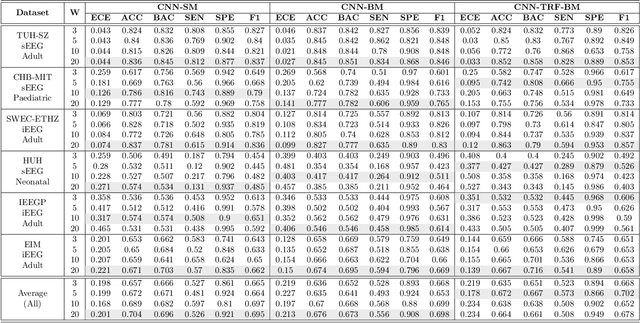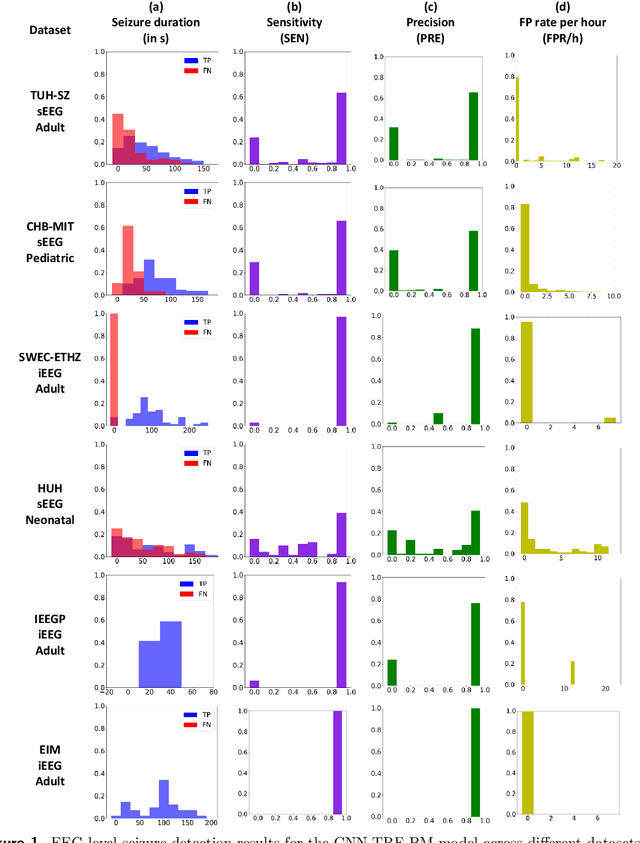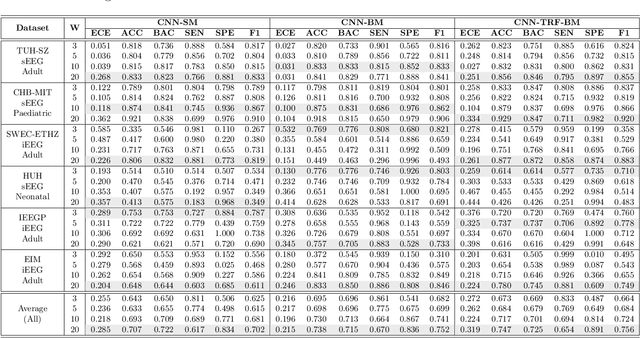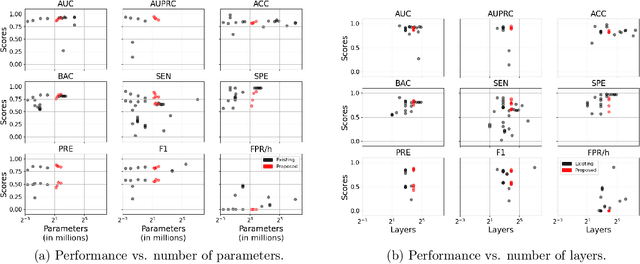Yee Leng Tan
Multi-center Assessment of CNN-Transformer with Belief Matching Loss for Patient-independent Seizure Detection in Scalp and Intracranial EEG
Aug 09, 2022



Abstract:Neurologists typically identify epileptic seizures from electroencephalograms (EEGs) by visual inspection. This process is often time-consuming. To expedite the process, a reliable, automated, and patient-independent seizure detector is essential. However, developing such detector is challenging as seizures exhibit diverse morphologies across patients. In this study, we propose a patient-independent seizure detector to automatically detect seizures in both scalp EEG (sEEG) and intracranial EEG (iEEG). First, we deploy a convolutional neural network (CNN) with transformers and belief matching loss to detect seizures in single-channel EEG segments. Next, we utilized the channel-level outputs to detect seizures in multi-channel EEG segments. At last, we apply postprocessing filters to the segment-level outputs to determine the start and end points of seizures in multi-channel EEGs. We introduce the minimum overlap evaluation scoring (MOES) as an evaluation metric, improving upon existing metrics. We trained the seizure detector on the Temple University Hospital Seizure (TUH-SZ) sEEG dataset and evaluated it on five other independent sEEG and iEEG datasets. On the TUH-SZ dataset, the proposed patient-independent seizure detector achieves a sensitivity (SEN), precision (PRE), average and median false positive rate per hour (aFPR/h and mFPR/h), and median offset of 0.772, 0.429, 4.425, 0, and -2.125s, respectively. Across four adult datasets, we obtained SEN of 0.617-1.00, PRE of 0.534-1.00, aFPR/h of 0.425-2.002, and mFPR/h of 0-1.003. Meanwhile, on neonatal and paediatric datasets, we obtained SEN of 0.227-0.678, PRE of 0.377-0.818, aFPR/h of 0.253-0.421, and mFPR/h of 0.118-0.223. The proposed seizure detector takes less than 15s for a 30 minutes EEG, hence, it could potentially aid the clinicians in identifying seizures expeditiously, allocating more time for devising proper treatment.
 Add to Chrome
Add to Chrome Add to Firefox
Add to Firefox Add to Edge
Add to Edge